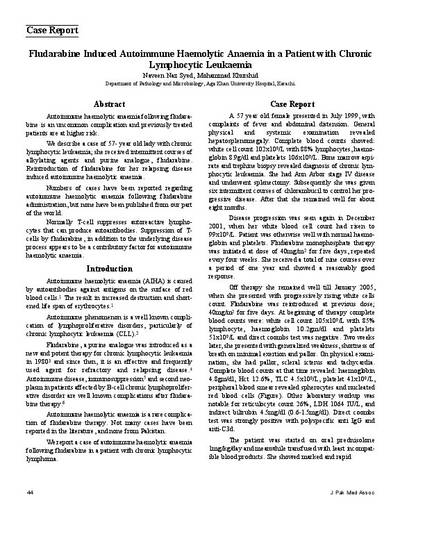
Autoimmune haemolytic anaemia following fludarabine is an uncommon complication and previously treated patients are at higher risk. We describe a case of 57- year old lady with chronic lymphocytic leukaemia; she received intermittent courses of alkylating agents and purine analogue, fludarabine. Reintroduction of fludarabine for her relapsing disease induced autoimmune haemolytic anaemia. Numbers of cases have been reported regarding autoimmune haemolytic anaemia following fludarabine administration, but none have been published from our part of the world. Normally T-cell suppresses autoreactive lymphocytes that can produce autoantibodies. Suppression of T-cells by fludarabine, in addition to the underlying disease process appears to be a contributory factor for autoimmune haemolytic anaemia.
Available at: http://works.bepress.com/mohammad_khurshid/44/
